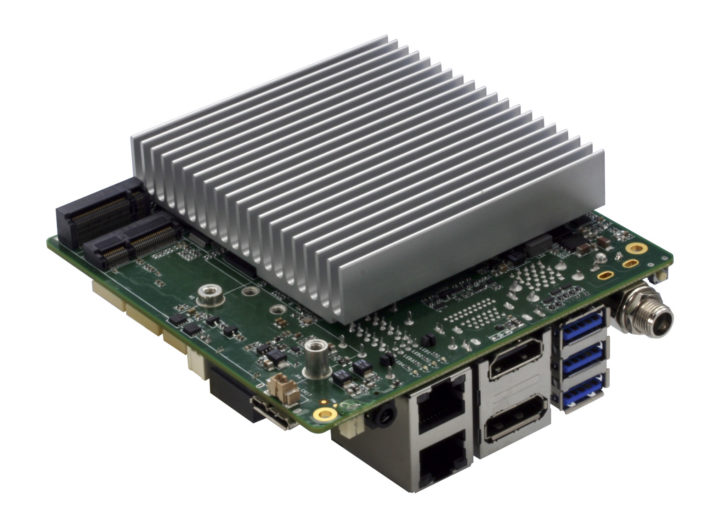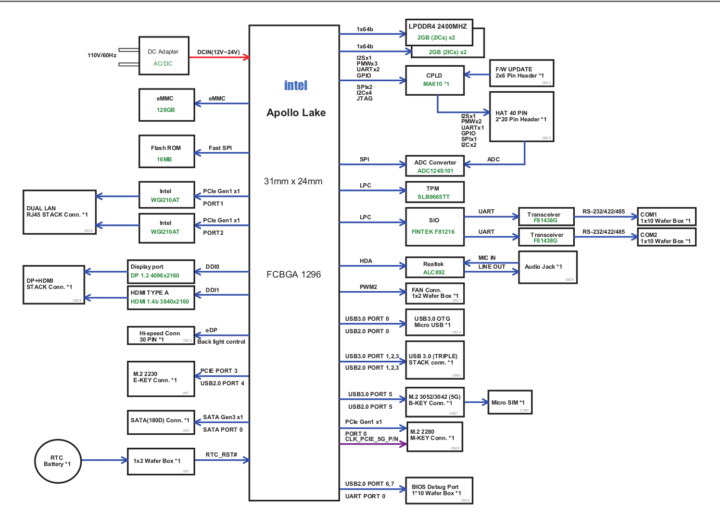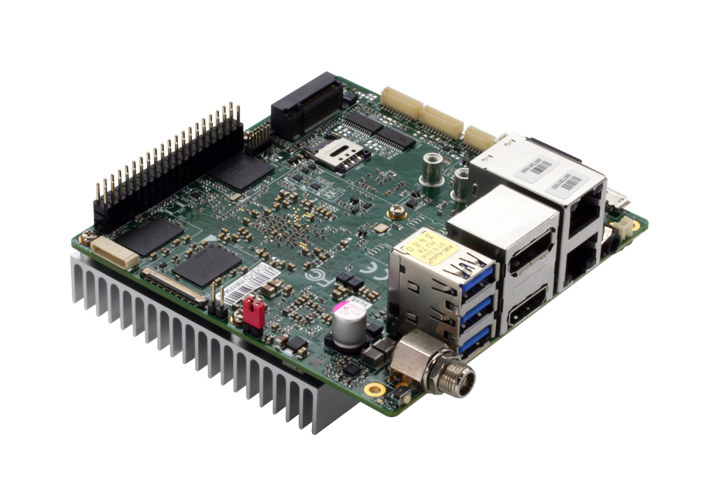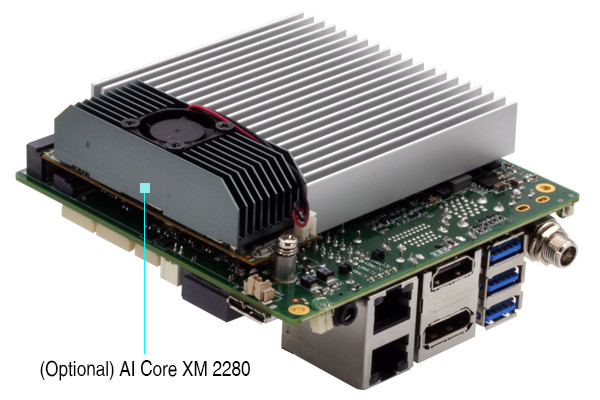UP Squared Apollo Lake SBC was launched in 2016 via a crowdfunding campaign with a price starting at just 89 Euros for the model with 2GB RAM 16GB storage, and a dual-core Intel Celeron N3350 processor.
AAEON has now announced an update simply called UP Squared Pro with many of the same features, but greater expandability and I/O features, for example, to add 5G modules and AI accelerators through one of the three M.2 sockets, as well as improved security via a TPM 2.0 chip.

strikethrough in comparison to the UP Squared specifications (in 2016):
- SoC (one or the other)
- Intel Celeron N3350 dual-core “Apollo Lake” processor @ 1.1 GHz / 2.4 GHz with 12 EU Intel HD graphics 500 @ 200 MHz / 650 MHz (6W TDP)
- Intel Pentium N4200 quad-core “Apollo Lake” processor @ 1.1 GHz / 2.5 GHz with 18 EU Intel HD graphics 505 @ 200 MHz / 750 MHz (6W TDP)
- Intel Atom x7-E3950 quad-core Apollo Lake processor @ 1.60 GHz / 2.00 GHz with Intel HD Graphics 505 @ 500 / 650 MHz (12W TDP)
- CLPD – Altera Max 10 CPLD
- System Memory – 2, 4, or 8 GB LPDDR4 SDRAM
- Storage –
16,32, 64or 128GB eMMC flash, 1x SATA III port - Video Output –
2x1x HDMI 2.0; 1x DisplayPort 1.2; eDP connector with 12 or 24V power; 3x independent displays support - Audio I/O – 3.5mm audio jack, digital audio via HDMI
- Connectivity – Dual Gigabit Ethernet
- USB – 3x USB 3.2 Gen 1 ports, 1x USB 3.2 Gen 1 OTG port, header with 2x USB 2.0 ports
Camera – 1x 4-lane MIPI CSI connector- Serial – 2x COM port (RS422/RS232/RS485)
- Expansion
- 40-pin GP (general purpose) Raspberry Pi compatible header with GPIOs, I2C, SPI, ADC …
60-pin EXHAT connector with GPIO, I2C, UART, USB 3.0… signals controlled by Altera FPGA and the Intel processor- 1x M.2 2230 E-key slot
- 1x M.2 2280 M-key slot
- 1x M.2 3042/3052 B-key slot
mini PCIe x1 slotHeader with 2x HSUART
- Misc – RTC header, fan, and power connectors, TPM 2.0 security chip
- Power Supply – 12V-24V DC-in (Lockable plug)/ Phoenix connector (optional) up to 5A
5V DC via power barrel - Dimensions – 101.6 x 101.6 mm (was 85.6 x 90 mm)
- Temperature Range – Operating: 0 to 60°C with fan, 0 to 50°C with heatsink
- Certifications – FCC, CE, RoHS, Reach

There are many more changes than I initially expected with different video outputs, support for a wide input voltage range, the addition of an audio jack, etc…, while the camera interface and the mPCIe slot are gone. Some available extension modules include AI Core XM M.2 2280 B+M key AI accelerator card with heatsink and a choice of two M.2 2230 WiFI 5 and Bluetooth modules with antennas.
On the software side, UP Squared Pro SBC can run Microsoft Windows 10, Windows IOT Core, as well as Ubuntu 18.04.5 and Ubuntu 20.04 Linux distributions. The board is also compatible with Intel OpenVINO Toolkit for all machine learning and AI applications.
Typical applications would include Edge AI gateways, drones and autonomous robots, smart surveillance, retail, machine vision applications with, for instance, the ability to detect facial masks or/and enforce proper social distancing in enclosed spaces.
UP Squared Pro can be pre-ordered on UP shop starting at $169 for the dual-core Celeron model with 2GB RAM, and 32GB flash, and up to $319 for the quad-core Pentium variant in 8GB/64GB configuration. Deliveries at scheduled to start later this month. Additional information may be found on the product page.

Jean-Luc started CNX Software in 2010 as a part-time endeavor, before quitting his job as a software engineering manager, and starting to write daily news, and reviews full time later in 2011.
Support CNX Software! Donate via cryptocurrencies, become a Patron on Patreon, or purchase goods on Amazon or Aliexpress






